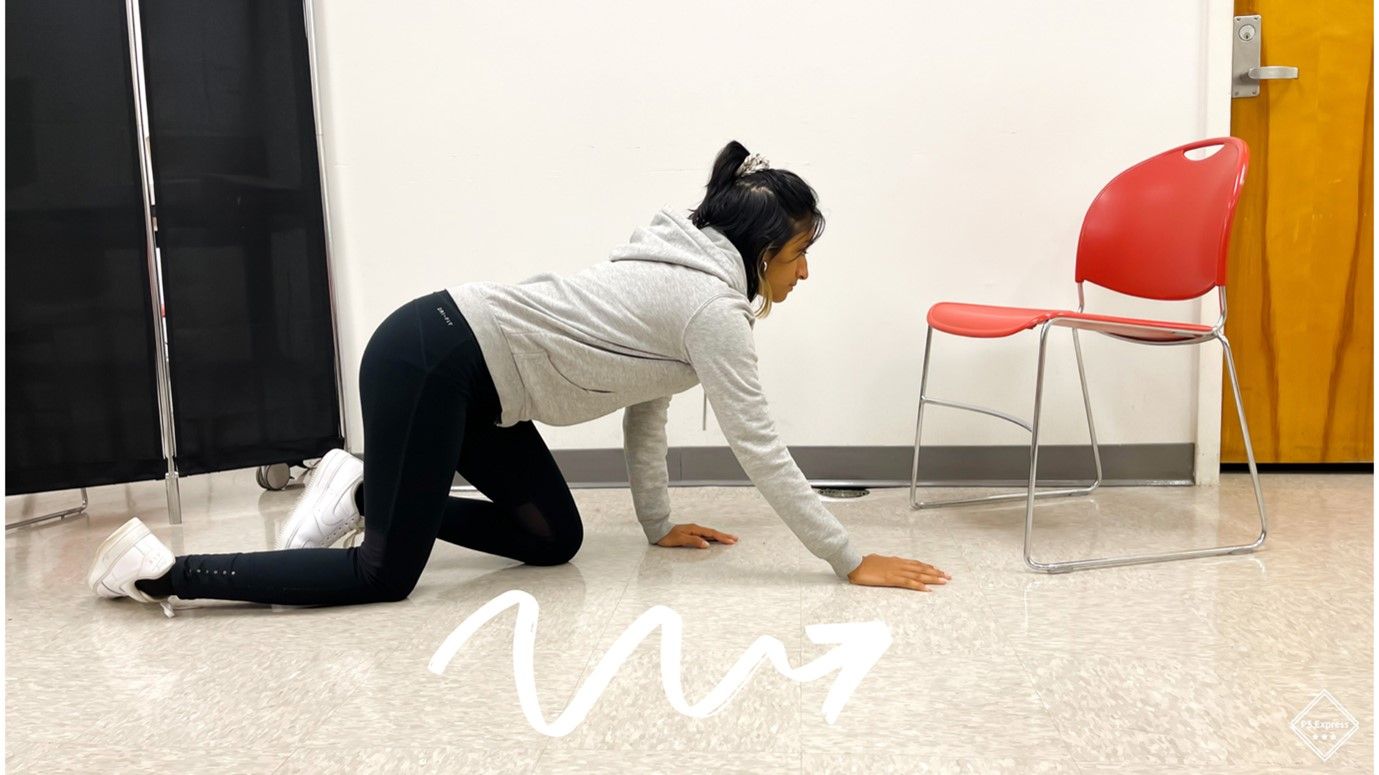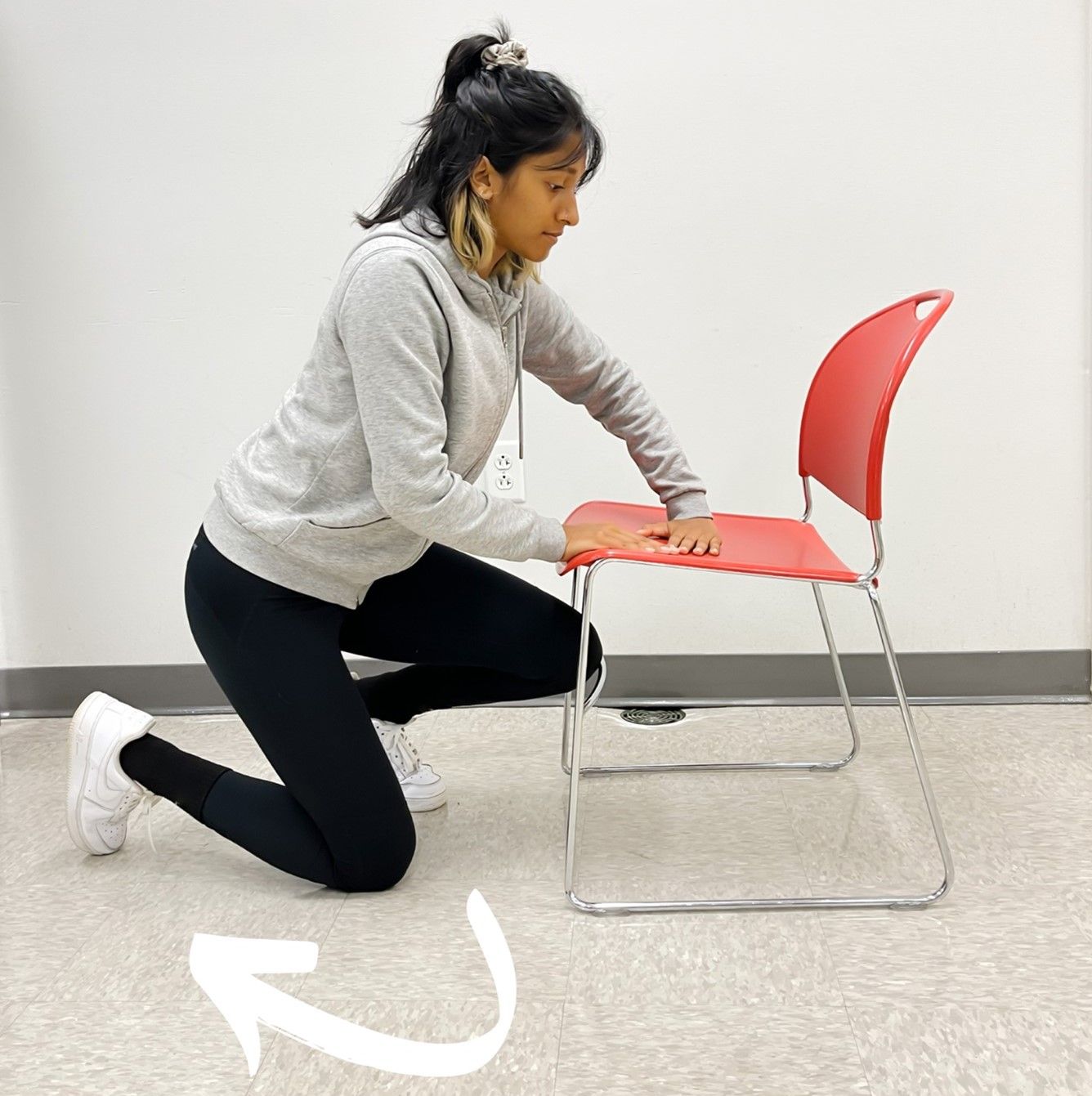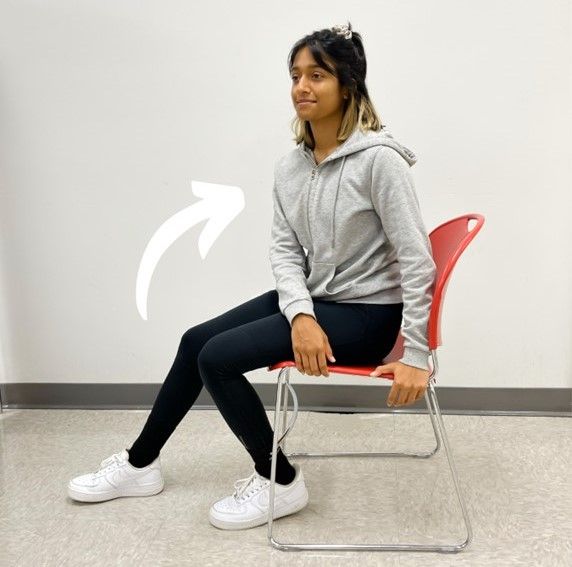Follow these steps to decrease the chance of further injury after a fall.
Do not panic.
After a fall, panic is often the first reaction. It is essential to stay calm and remain still so you can think clearly and take the appropriate steps to get help if needed.
Check for injuries.
Do not get up if you think you may have a broken bone or another injury. Yell for help or crawl to the telephone and call for help.
Get up if you can.
If you can get up, do so slowly. Here is how to get up safely:
Step 1. Roll over onto your side. Rest to allow blood pressure to adjust.

Credit: Kaylan B. Hebert, UF/IFAS
Step 2. Crawl to a stable chair.

Credit: Kaylan B. Hebert, UF/IFAS
Step 3. Put hands on the seat of the chair. Pull yourself up.

Credit: Kaylan B. Hebert, UF/IFAS
Step 4. Bring one leg forward, bending the knee with your foot flat on the floor. The other leg will be bent, knee on the floor.

Credit: Kaylan B. Hebert, UF/IFAS
Step 5. Slowly turn and sit in the chair.

Credit: Kaylan B. Hebert, UF/IFAS
Make a list of phone numbers of people you can call in an emergency. Keep the list by the phone. If you need help immediately, call 911.
These videos demonstrate how to get up from a fall: https://youtu.be/ytXndx5Gako, https://youtu.be/Qpl8E-7drdc
Recommended resources: https://www.nia.nih.gov/health/prevent-falls-and-fractures